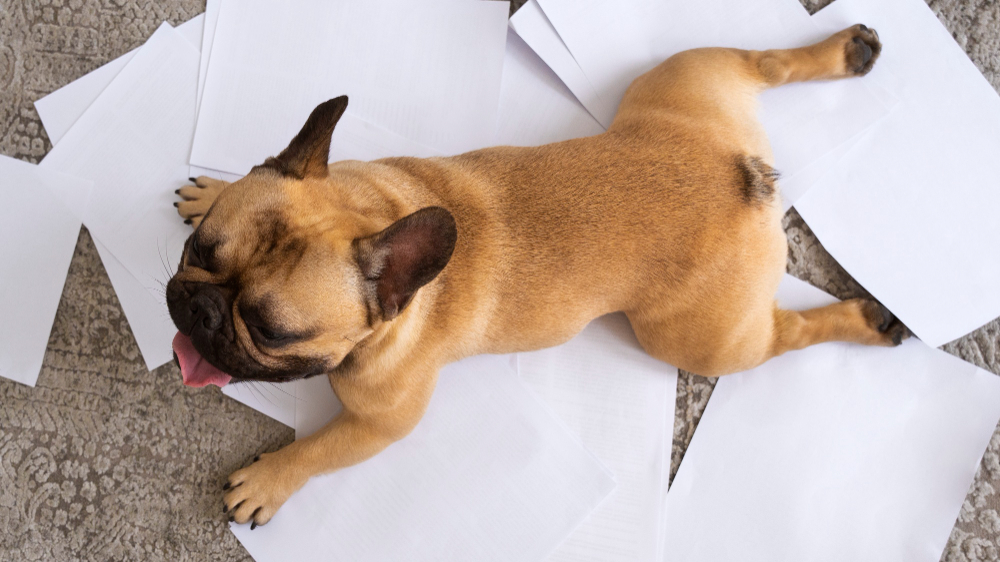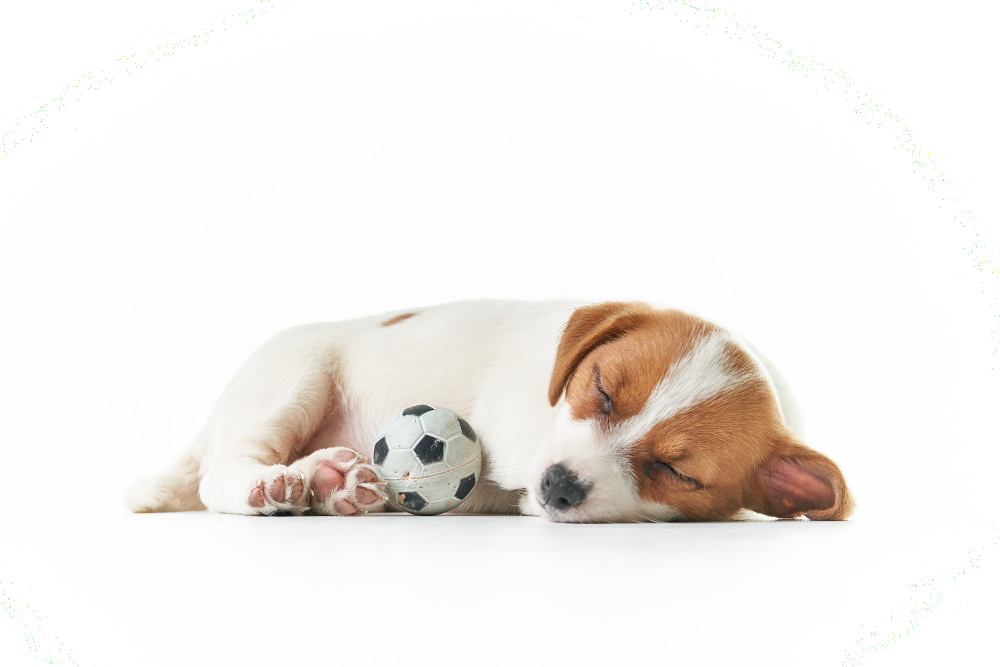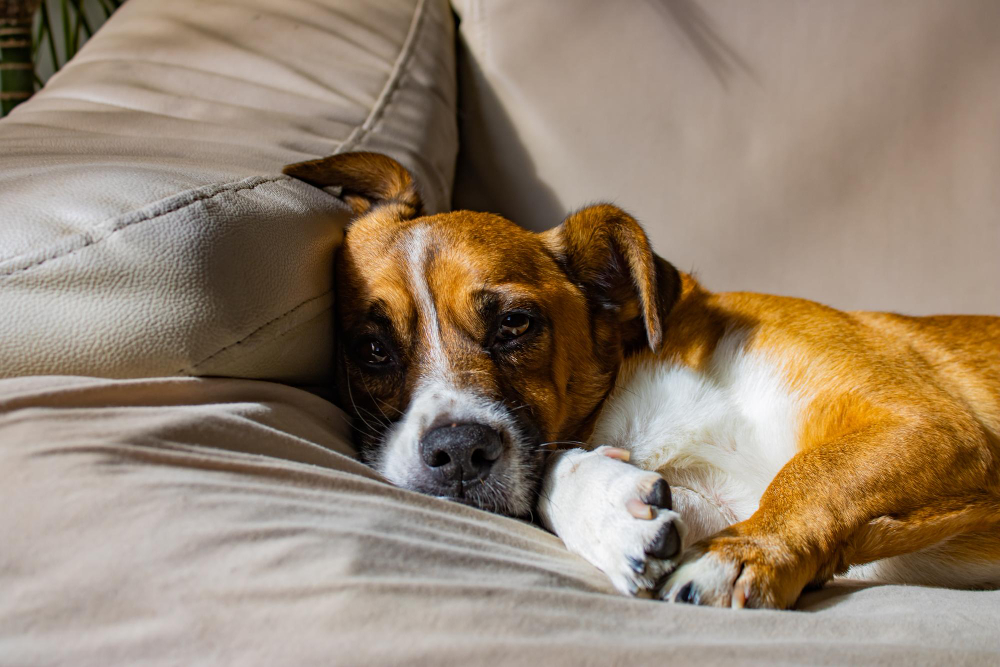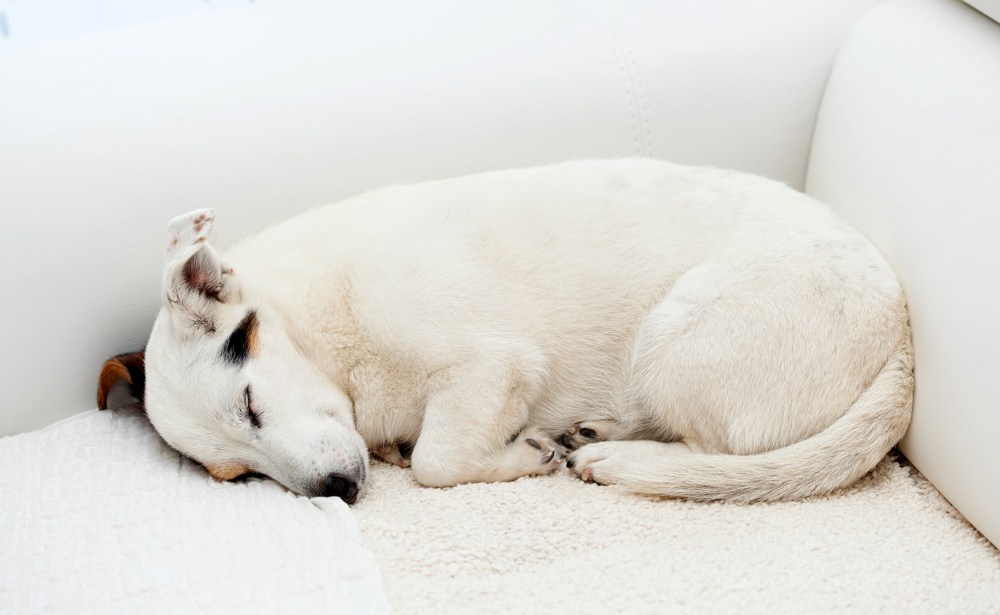
Owning a dog is, without a doubt, a lot of joy and love. However, in the middle of that love and happiness, there are specific episodes when you can't help but worry about them. Food bloat in dogs is one of those instances.
Food bloat is very common in dogs. It occurs when a dog eats beyond their stomach's capacity. Today, we're going to look at what exactly food bloat is in dogs, the symptoms of bloat, how to diagnose it, what usually causes it, and lastly, when to seek help from a professional.
Stick around while we tell you all you need to know about food bloat in dogs so that you're well prepared if you encounter it with your dog.
What Is Bloat In Dogs?

Bloat is a severe problem where a dog's belly swells up because of too much food or gas, which can be painful. It can happen to any dog, but it's more common in bigger or deep-chested ones.
A dog's stomach usually has a bit of gas, food, and other stuff. When a dog eats, the food goes into the tummy, gets broken down, and moves through the belly and gut. But when bloat happens, the stomach swells up, leading to the blood flow getting cut off. This causes damage to the stomach itself along with other organs.
In most cases, it even makes it hard for the dog to breathe, as it puts pressure on the diaphragm that separates the chest from the abdomen.
When the stomach fills up with gas, it stops the blood from reaching the abdomen and the stomach itself. This halted blood flow can also seriously damage the stomach wall and, if left untreated, possibly other organs.
In really severe cases of bloat, a dog's stomach twists and fills up with gas, which is called gastric dilatation and volvulus (GDV). This is a super painful condition and is considered one of the most severe issues in veterinary care.
It stops the blood from going to the stomach and lower body, so food can't move to the gut. It is not something pet owners can afford to take lightly, as in very extreme GDV cases, the stomach can even burst, and the spleen can get hurt.
It is important to emphasize here that it is a super urgent health problem, and if not fixed, a dog with GDV can die in just a few hours.
Symptoms Of Bloat In Dogs

Bloat is a highly uncomfortable and often painful health issue for dogs. When a dog has bloat, you may notice the following signs:
-
Dry-heaving
In case of a bloat, your dog may retch or attempt to vomit without bringing up food. They try to induce vomiting to get some relief. Sometimes, your dog may spit out white foam, usually mucus, from its esophagus or stomach.
-
Whining
Another sign of bloat in dogs is whining. They might make whimpering or high-pitched sounds, which is their way of showing that they are in pain and distress because of the bloat.
-
Abdominal Swelling
Your dog's abdomen may become visibly bigger, but this might not be obvious in the early stages of bloat, so look out for any signs of swelling and see if it is increasing.
-
Restlessness
Your dog might become suddenly anxious, pacing around, unable to find a comfortable position. It may also constantly move around the room or house to relieve the pain.
-
Guarding their Belly
When a dog experiences bloat, they might act defensively or seem concerned about their stomach area, often by looking back at their belly, trying to figure out what is up. This behavior is an indicator of their discomfort and pain.
-
Lack of Energy and Appetite
Dogs with bloat may also seem unusually tired and lose interest in eating. They might appear lethargic, lacking their usual energy, and not wanting to eat, even if they're typically enthusiastic about food.
These alterations in behavior can be a sign that something is wrong and should be taken seriously.
-
Unusual Body Position
While going through a bloat episode, certain dogs may opt for a posture resembling the yoga pose, usually known as the downward-facing dog.
In this position, their back end is raised while their upper body is lowered. This unusual pose could be a sign of their discomfort and distress.
-
Panting and Drooling
Dogs with bloat may excessively pant and drool. While a dog can pant and drool in other cases, look out for it combined with other signs like a swollen stomach.
-
Increased Heart Rate
Pain or irregular blood circulation both can lead to abnormal heart rate. So, when a a dog has a bloat, it may have a fast heartbeat, a condition known as tachycardia.
-
Collapsing
In severe cases of bloat, the dog may even collapse due to the pain and distress caused by bloat. However, it is essential to avoid letting the situation escalate this far and seek help beforehand.
What Can Cause Food Bloat In Dogs?

Why bloat and GDV happen in dogs is not entirely understood, but certain things can make it more likely for a dog to get bloat.
It is important to note that any dog can get bloat, but some factors can increase the chances of it happening -
- If a dog eats a lot or gulps a lot of water quickly, it can raise the risk of bloat.
- Dogs weighing over 99 pounds have a higher chance, about 20% more, of getting bloat.
- Older dogs are at a greater risk of bloat.
- Deep-chested dogs, like Great Danes, are more prone to bloat.
- Running or playing right after a meal can also cause a bloat.
- Eating from a raised food bowl is said to increase the risk of bloat.
- If a dog's lineage has dogs with this condition, it raises its chances of getting it.
- Certain ingredients in dry food can make bloat more likely, like oil and fats.
You must know these factors to help prevent this condition in your furry friend.
How To Diagnose Bloat In Dogs?

While an experienced vet can diagnose bloat or GDV by observing a dog's distressed behavior and how they look physically, they usually conduct tests to confirm the diagnosis. These tests include:
-
Blood test
The vet might take a small sample of your dog's blood to check how healthy your dog is and see if any problems could point toward bloat.
-
Abdominal X rays
An abdominal x-ray is taken to determine the severity of a bloat. X-rays can show if a dog has basic bloat or if it has advanced to GDV, where the stomach is severely swollen and has a bubble on top of the already swollen belly.
Treatment For Bloat

Bloat occurs at least once in your dog's life. The treatment for simple bloat is relatively straightforward. Dogs are hospitalized and given a lot of intravenous fluids along with other medication.
They are also taken for frequent walks to help move gas and food through their system.
However, for dogs with GDV, the care is more intensive.
First, they're given fluids with electrolytes to treat the shock and make sure their essential organs get the blood they need. They are also given pain medications and antibiotics to help with any pain or damage to their body tissues due to poor blood circulation.
The bloated stomach is decompressed by removing gas, which helps restore blood flow to the lower part of the body. Sometimes, this can even untwist the stomach, which is extremely important for your dog's recovery. An ECG machine is used to watch their heart closely for any issues.
When the dog is eventually stable enough, they undergo immediate surgery. The vet might need to untwist the stomach and spleen and remove any damaged part of the stomach wall.
To prevent future cases of GDV, a procedure called gastropexy is done. In it, the stomach is attached to the body wall, reducing the risk of it twisting again in the future.
Final Words
In conclusion, dog food bloat is a severe and sometimes life-threatening condition that every dog owner should be aware of. Our furry companions can't always tell us when something is wrong, so it's up to us to recognize the signs and prevent food bloat in our dogs. And when your dog gets bloated, we need to treat bloat immediately.
Simple precautions, like feeding our dogs smaller meals and making sure they don't gulp down food and water too fast, can go a long way in preventing this distressing condition.
If you notice any signs we've discussed, such as restlessness, whining, excessive panting, or a distended abdomen, don't hesitate to contact your veterinarian. Early detection and quick treatment are vital in saving your dog's life.
The diagnostic process, including blood tests and X-rays, may seem daunting, but these steps are crucial for confirming the condition and determining its severity. The good news is that with the proper medical attention and interventions, many dogs can easily recover from the state.
In the end, being informed as dog owners is the best defense against bloat in dogs. By catching the signs early on, understanding the risk factors, and seeking veterinary care ASAP, we can ensure the well-being of our loyal four-legged friends and enjoy a healthy and happy life with them. And you let your dog eat the things they love the most. If your dog wants, you can give them human food as well. Just check with your vet first.



















